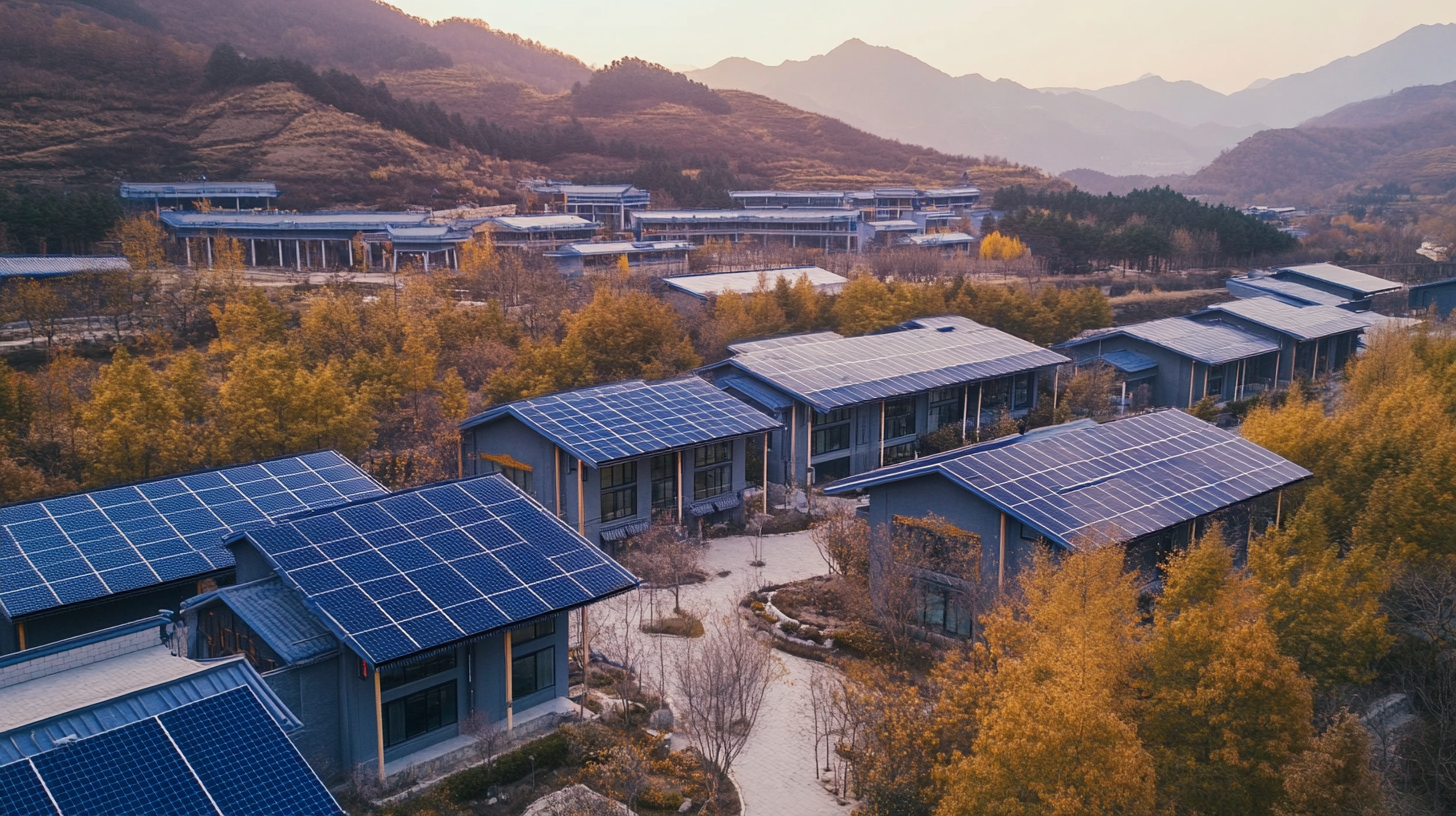Blog
- Home
- Blog
Navigating Tariff Challenges: How Chinese Manufacturers Thrive with Best Solar Electricity Solutions
In the ever-evolving landscape of global trade, the imposition of reciprocal tariffs between the United States and China has presented significant challenges for manufacturers across various industries. However, within this adversity, Chinese manufacturers have discovered innovative pathways to not only survive but thrive, particularly in the realm of solar electricity solutions. As demand for renewable energy continues to skyrocket, these manufacturers have leveraged their expertise and resourcefulness to overcome tariff obstacles and deliver advanced solar electricity technologies to the market. This blog will delve into the strategies that have enabled Chinese companies to navigate these tariff challenges, highlighting their commitment to innovation, sustainability, and the provision of high-quality solar electricity solutions that meet the needs of a greener future.

Strategies for Chinese Manufacturers to Overcome Tariff Obstacles
Navigating tariff barriers presents significant challenges for Chinese manufacturers in the solar energy sector. To overcome these obstacles, it is crucial for businesses to adopt strategic approaches that not only mitigate the impact of tariffs but also enhance their competitive edge. One effective strategy is to diversify supply chains by sourcing raw materials from multiple countries. This can help minimize cost fluctuations and reduce dependency on any single market, allowing manufacturers to remain agile and responsive to changing tariff regulations.
Additionally, innovation plays a pivotal role in overcoming tariff challenges. By investing in research and development, Chinese manufacturers can create more efficient and advanced solar technologies that appeal to global markets. This not only helps them maintain a competitive price point but also strengthens their positioning in a rapidly evolving industry. Furthermore, fostering partnerships with international firms can open new market opportunities, enabling manufacturers to navigate tariff challenges collaboratively while expanding their reach and impact in the global marketplace.

Innovative Solar Technologies Driving Growth Amidst Trade Tensions
In the current landscape of global trade tensions, particularly concerning tariffs, Chinese manufacturers are demonstrating remarkable agility and resilience in the solar electricity sector. Innovative solar technologies have become a cornerstone of growth as these manufacturers leverage advancements to improve efficiency and reduce costs. By investing in research and development, they are not only enhancing their product offerings but also effectively countering the impact of tariffs while remaining competitive in the international market.
Moreover, the rise of smart solar solutions and energy storage systems has allowed Chinese companies to cater to a broader range of consumer needs. These innovations provide not only sustainable energy options but also significant economic benefits, allowing manufacturers to thrive despite external challenges. As Chinese manufacturers continue to harness cutting-edge technologies, they are simultaneously contributing to a global shift towards renewable energy, driving both industry growth and environmental sustainability in the process. This adaptability is crucial as they navigate the complexities of trade, positioning themselves as leaders in the solar electricity landscape.
The Role of Government Policies in Supporting Chinese Solar Industry
Government policies play a crucial role in bolstering the Chinese solar industry, providing a supportive framework that fosters innovation and growth. Policies such as subsidies for solar panel production, tax incentives for renewable energy projects, and favorable tariffs on imported solar materials have significantly lowered operational costs for manufacturers. This supportive environment has enabled Chinese companies to develop advanced technologies, ultimately strengthening their competitive edge in the global market.
Additionally, the Chinese government has implemented ambitious renewable energy targets, pushing for a significant increase in solar energy capacity. By setting clear guidelines and offering financial support for research and development, the government encourages manufacturers to invest in cutting-edge solar electricity solutions. This not only helps firms navigate tariff challenges but also positions China as a leader in the renewable energy sector. The intertwining of government policy with industry needs showcases a model that other countries may seek to replicate, making the Chinese solar industry a beacon of resilience and innovation amid global trade challenges.

Case Studies of Successful Chinese Companies in Tariff-Impacted Markets
In recent years, Chinese manufacturers have demonstrated remarkable resilience despite the challenges posed by tariffs in global markets. These companies have not only adapted to changing economic landscapes but have also leveraged innovative solar electricity solutions to stay competitive. For instance, a well-known solar panel manufacturer successfully navigated tariff barriers by investing in local production facilities in key markets. This move allowed them to reduce shipping costs and create jobs locally, enhancing their brand image while complying with regulatory requirements.
Another standout example is a Chinese solar technology firm that partnered with engineering firms in targeted regions to develop customized solar solutions tailored to local needs. By focusing on research and development, they effectively overcome tariff-related hurdles and positioned themselves as leaders in localized renewable energy projects. Their strategy has proven successful, resulting in increased market share and a diversified client base, even in tariff-impacted areas where competition was tough. Through these case studies, it's evident that with strategic planning and innovation, Chinese manufacturers are not just surviving but thriving in a complex global market.
Navigating Tariff Challenges: How Chinese Manufacturers Thrive with Best Solar Electricity Solutions - Case Studies of Successful Chinese Companies in Tariff-Impacted Markets
| Company Name | Market Impact | Tariff Strategies | Achievements |
|---|---|---|---|
| LONGi Green Energy | U.S. Tariffs on Solar Panels | Cost Reduction via Local Manufacturing | Increased Market Share by 15% in 2022 |
| Trina Solar | European Import Duties | Partnerships with Local Installers | Expansion into 5 New European Markets |
| JA Solar | Australia Anti-Dumping Duties | Investment in R&D for High-efficiency Panels | Reduced Production Costs by 10% |
| First Solar | Market Changes due to Tariffs | Diversified Solar Product Range | Acquired 3 Major Contracts in 2023 |
Future Prospects: How Global Trends May Shape the Solar Industry in China
As the global dominance of solar energy continues to rise, China's solar industry stands at a pivotal juncture. According to a report by the International Energy Agency (IEA), solar power is projected to contribute nearly 15% of the world's electricity by 2025, positioning countries like China at the forefront of this transition. With the increasing demand for renewable energy and innovations in technology, Chinese manufacturers have adapted rapidly, leveraging advanced manufacturing processes and economies of scale to enhance their competitiveness in the global market.
Emerging trends such as energy storage solutions and the integration of artificial intelligence into solar systems are set to reshape the industry landscape. A market analysis from Wood Mackenzie indicates that by 2026, the demand for battery storage in conjunction with solar installations is expected to double. This presents an opportunity for Chinese manufacturers to diversify their product offerings and lead in the burgeoning energy storage sector. Moreover, government policies targeting carbon neutrality and sustainable development are expected to further accelerate growth, as China aims to achieve its goals of peak carbon emissions by 2030 and carbon neutrality by 2060. This confluence of trends signals a promising future for China's solar industry, with Chinese manufacturers poised to thrive amidst global challenges.
Navigating Tariff Challenges: Solar Electricity Solutions in China
This bar chart illustrates the growth of solar electricity capacity in China from 2018 to 2023, highlighting how manufacturers are adapting to tariff challenges and global trends.